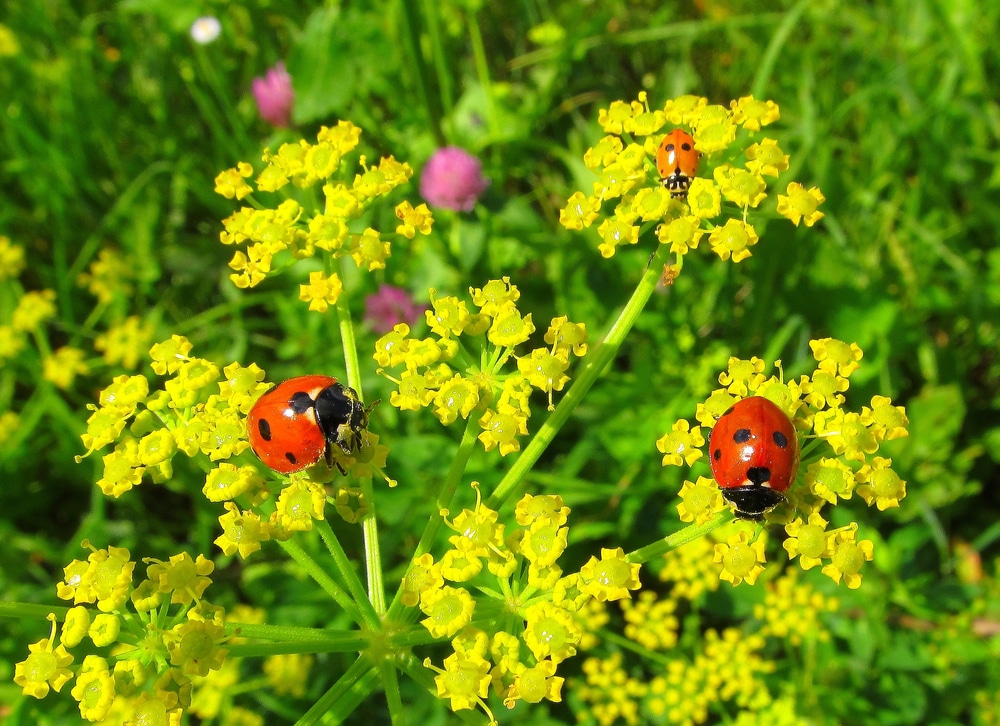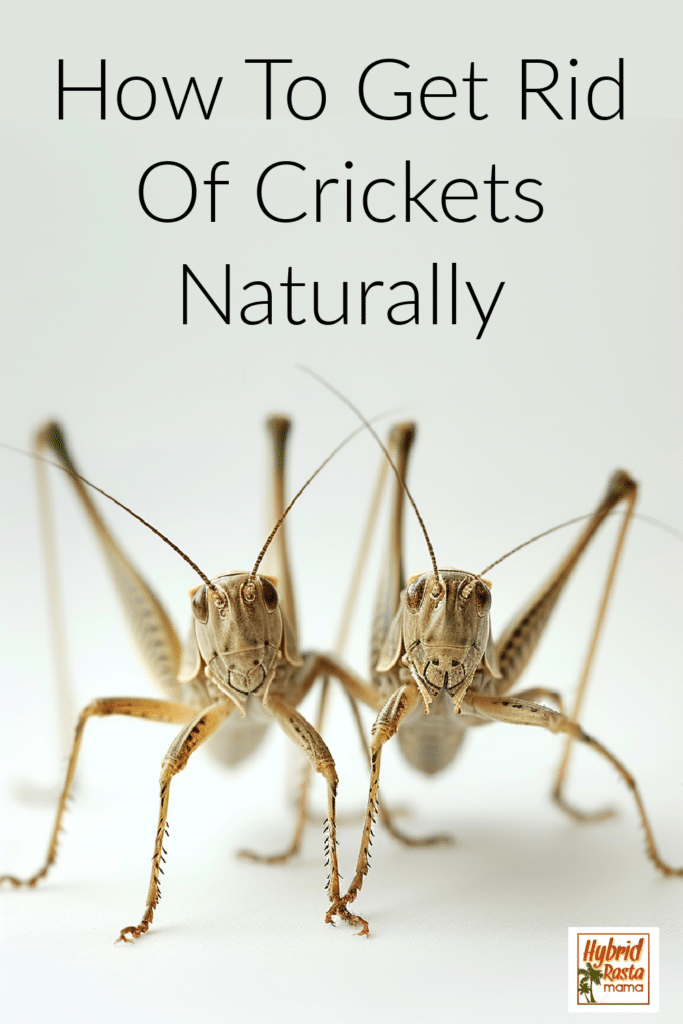Dealing with a cricket invasion can disrupt the tranquility of our living spaces. The persistent chirping and potential damage to fabric and plants make me eager to find solutions that restore peace without harming the environment. Many of us are turning to natural remedies as they pose minimal risks to our health and the planet. Unlike chemical pesticides that may leave harmful residues and affect non-target organisms, eco-friendly methods can effectively manage cricket populations. In this article, I’ll walk you through seven natural techniques: from sweet molasses traps to the strategic planting of nitrogen-fixing flora. These approaches will help you get rid of crickets naturally as well as prevent them in the first place.
Sweet & Sticky: The Molasses Method For Crickets
To naturally tackle a cricket invasion, I often turn to the tried-and-true molasses method. This involves creating a straightforward yet effective trap by utilizing molasses’ sweet allure that crickets find irresistible. Begin by finding a shallow container – a dish or a bowl works perfectly. Pour molasses into the container, filling it just enough to create a sticky pool that will act as the cricket catcher.
Next, add water to dilute the molasses slightly; this concoction should be just liquid enough to entice the crickets but sticky enough to prevent their escape. Place the container in areas where you frequently spot crickets or where the incessant chirping originates. The combination of sweetness and stickiness draws crickets to the trap where they become ensnared, unable to leap away due to the viscous nature of molasses.
The efficiency of this method comes from the crickets’ penchant for sweet substances, much like many other insects. Molasses, with its strong, inviting scent and sugary content, acts as a powerful lure. Through this eco-friendly pest control method, I find that eliminating crickets can be as simple as setting up a discreet molasses trap, reducing the need for harsh chemical repellents and fostering a more peaceful and cricket-free living space.
The only downside to this is that ants love it too. But no worries! I know how to prevent ants naturally too!
You can use any type but I happen to love this Molasses.

A Tidy Exterior: Yard and Plant Maintenance
Maintaining a neat yard plays a pivotal role in deterring crickets from considering your space a haven. Regular mowing, pruning, and debris removal limit the shelter crickets seek. This disciplined approach creates an environment less conducive to their survival. I focus on eradicating tall grass and dense plantings near my home’s foundation, as these are prime spots for crickets to congregate and breed.
Overwatering your lawn and garden extends an open invitation to crickets. These insects flourish in moist conditions, which mimic their natural habitats. By moderating my watering schedule and ensuring proper drainage, I disrupt this ideal breeding ground. This practice not only conserves water but also reduces the humidity levels that crickets find attractive. By keeping the moisture in my yard balanced, I take an effective step in minimizing cricket populations and shielding my home from unwanted guests.
Crickets’ Nemesis: Diatomaceous Earth
Diatomaceous earth acts as a top-notch, natural insecticide against crickets by leveraging its microscopic, sharp edges. Made from the fossilized remains of tiny aquatic organisms called diatoms, this powdery substance works mechanically, not chemically, piercing through the waxy exoskeleton of crickets and other crawling pests. Once the exoskeleton is compromised, the insects dehydrate and die, making diatomaceous earth a non-toxic yet effective method to combat cricket invasions in your home.
To use diatomaceous earth, I follow these guidelines for safe and effective application:
- Select Food-Grade Diatomaceous Earth: Always ensure the product is labeled as ‘food-grade’ to guarantee it’s safe to use around children and pets.
- Target High-Traffic Areas: Identify areas with cricket activity such as windowsills, doorways, and baseboards. You might also find them near garbage bins, in basements, or around piles of clutter.
- Apply a Thin Layer: Using either a dust applicator or a simple shaker, spread a fine dusting of diatomaceous earth over these identified hotspots. A thick layer can deter crickets from crossing, so less is actually more in this case.
- Reapply After Cleaning or Rain: Diatomaceous earth loses its potency when wet, so after any rain or cleaning, it’s important to reapply to maintain its effectiveness.
- Keep the Area Dry: Because crickets are attracted to moist environments, pairing diatomaceous earth application with moisture control enhances your defense against these critters.
Regularly inspect treated locations and refresh the diatomaceous earth as needed. Over time, you’ll notice fewer unwanted visitors, keeping your abode cricket-free. Applying this natural, non-toxic remedy is a powerful step towards reclaiming your peace and quiet from persistent cricket chirps.
This is my favorite brand of Diatomaceous Earth.
Green Defense: Planting Nitrogen-Fixers
If you’re seeking an eco-friendly method to repel crickets, incorporating nitrogen-fixing plants into your green space can be a game-changer. These plants have a unique ability to pull nitrogen from the air and fix it into the soil, enhancing the fertility of your garden without the need for chemical fertilizers. A healthy, nutrient-rich environment is less attractive to crickets, who prefer barren spaces where they can easily hunt for food.
Including nitrogen-fixing species like clover, alfalfa, and peas in your garden not only improves soil health but also reduces the likelihood of cricket invasions. Peas, with their sweet-smelling flowers, attract beneficial insects while deterring crickets subtly. Clover, an excellent ground cover, creates a dense mat that deters crickets from making themselves at home. Alfalfa, with its deep roots, helps bind the soil, preventing crickets from finding comfortable spots to lay eggs.
I recommend integrating these plants within your vegetable gardens or flower beds as part of a comprehensive defense against crickets. Their presence will keep the soil rich for your primary plants and create an unsuitable habitat for crickets, leading to a naturally balanced ecosystem where pests don’t overrun your outdoor oasis.

Sealing Entry Points
I often hear from people struggling with unwanted six-legged guests chirping away at the edges of their consciousness. The solution starts with a survey of your home, pinpointing possible points of entry. Search meticulously; crickets can exploit even the smallest gap. Inspect windows, doors, siding, utility pipes, cables, and vents. Frequently, old weather stripping and damaged screens act as unintended welcome mats for these insects.
Once identified, get to work sealing these avenues. Apply caulk to cracks and gaps in your walls, doors, and window frames. Replace any worn weather stripping and fix broken screens. For larger openings around pipes and vents, use wire mesh combined with sealant for a durable barrier. Remember, this effort extends beyond immediate relief; a well-sealed home guards against an array of pests and contributes to energy efficiency.
- Weather Stripping: Check and replace it to prevent crickets and other pests from squeezing through the cracks. This weatherstripping is inexpensive and works very well.
- Door Sweeps: Install them to seal the gap beneath doors, a common entry point for crickets. I found a really easy to install door sweep that hold up well.
- Screens: Repair any tears or holes in window and vent screens to keep flying and jumping pests out.
- Caulking: Seal up cracks and openings in the foundation, walls, and around windows.
- Wire Mesh: Cover larger openings like vents and chimneys, which can serve as gateways for cricket invasions.
Adopting these steps not only quells the current cricket choir but also sets a perimeter defense against future invasions. An ounce of prevention, in this case, can save a ton of sleepless nights and unwelcome surprises. Stay vigilant and maintain these barriers regularly; sealant ages, and new gaps can form. Peace of mind comes with knowing your home stands fortified against these unwelcome interlopers.
Utilizing Natural Predators
I find that embracing the natural ecosystem is a highly effective strategy for controlling cricket populations. By encouraging the presence of certain predators in your garden, you’re leveraging nature’s own pest control mechanisms. For instance, birds are excellent cricket hunters; attracting them with birdhouses and feeders can be an effective way to keep cricket numbers down.
Similarly, frogs and toads are known to feast on crickets. Creating a small pond or a damp, shady habitat in your yard can invite these amphibians to settle in and help manage the cricket infestation. Lizards and spiders also consume crickets. They can be attracted by providing shelter in the form of rock piles or dense plantings where they can hide and hunt.
Consider inviting predatory insects too, such as ladybugs and ground beetles, which will go after cricket eggs and nymphs. These beneficial insects can be enticed by planting a diverse range of flora that provides nectar and pollen. The added flora contributes to a thriving garden ecosystem, reducing the need for chemical pesticides and creating a balanced environment that naturally limits cricket populations.

The Chili Pepper Solution To Prevent Crickets
If crickets are making themselves at home in your space, a chili pepper solution might be just what you need to send them packing. For this homemade repellent, you’ll require fresh hot chilis or hot chili powder, two cups of water, and a few drops of dish soap. Here’s how to whip up this spicy concoction:
- Gather Your Ingredients: Suit up with gloves, goggles, and a mask to protect your skin, eyes, and lungs from the chili’s fiery kick.
- Prepare the Mixture: Chop the chilis finely, if using fresh, or measure out the equivalent in chili powder. Combine your choice of chili with the water in a pan, and set it to simmer gently to infuse the heat into the liquid.
- Cool and Strain: After letting the mixture cool down, strain it to remove the solid bits, leaving you with a potent, chili-infused water.
- Add Dish Soap: Mix in a few drops of dish soap. This helps the repellent stick to surfaces, ensuring longer-lasting cricket deterrence.
- Transfer to a Spray Bottle: Pour the solution into a spray bottle for easy application.
Apply the spray around the perimeter of your home, focusing on entry points and areas where crickets are likely to hide. Steer clear of directly spraying plant leaves, as the chili’s intensity might harm them. Reapply after rain or as needed to maintain a cricket-free zone. Remember, this natural remedy is powerful stuff, so handle it with care to avoid irritation or discomfort.
Amp It Up with Garlic
If you’ve already crafted the chili pepper solution, I recommend amplifying its potency with a simple addition: garlic. By incorporating crushed garlic cloves into your mixture, you create an even more powerful deterrent for those pesky crickets. Garlic emits a strong odor that not only repels crickets but also enhances the overall effectiveness of the repellent, making it an unfriendly environment for them to thrive.
To incorporate garlic, take a few cloves and crush them to release their pungent oils. Mix these directly into the chili solution and let the mixture sit for a few hours, allowing the flavors to meld and the aroma to intensify. When you’re ready, strain out the garlic pieces to avoid clogging your spray bottle, and apply the solution around the perimeter of your home, focusing on potential entry points and high-activity areas. Remember to reapply every few days or after heavy rain to maintain its repellent efficacy. Always use gloves when handling the solution to prevent skin irritation.
Avoiding Future Cricket Infestations
Laying the groundwork for a cricket-free environment extends beyond immediate measures and into the realm of preventative action. Landscaping with precision stands out as a decisive factor in dissuading crickets from regarding your home as an ideal habitat. Cultivate a space that’s less inviting to these critters by keeping foliage neatly trimmed and ensuring a respectable distance between the plants and your home’s walls. Remember that crickets adore moisture, so regulating irrigation to prevent water accumulation near the foundation is equally critical.
Another tactic to employ is debris management. Clear your property of unnecessary litter, such as leaves, woodpiles, and excess mulch, as these can offer cozy hideouts for crickets. Consistent monitoring of your home’s perimeter for potential cricket entry points addresses another side of the prevention puzzle. Check for and promptly repair any crevices or openings that might serve as an unintentional welcome sign for these insects.
Finally, consider routine check-ups not as a chore but as an ongoing aspect of home stewardship. Regularly inspect and adjust your strategies, always keeping alert for signs of renewed cricket activity. This vigilance ensures that your efforts to maintain a tranquil home remain successful and that the only chirps you hear are those of birds, harbingers of serenity rather than pests.
A Cricket Free Home
We’ve walked through a series of natural solutions tailored to free your home from cricket serenades. Remember, molasses can act as a sticky trap, and maintaining your yard deters these critters from settling in. I’ve shared how sprinkling diatomaceous earth can act as an effective line of defense and how planting nitrogen-fixers can shield your garden. Securing your home by sealing entry points is crucial for keeping unwanted guests out.
Don’t forget the power of nature’s own pest control—encouraging the presence of cricket predators can maintain the balance in your backyard ecosystem. For those seeking a homemade repellent, a spicy chili pepper mix, possibly augmented with garlic, has been proven effective.
You now have a toolkit of eco-friendly tactics at your disposal. These methods not only evade the hazards of chemical pesticides but also contribute to a more balanced environment. So, let’s keep up with these proactive strategies and enjoy the rewards of our labor—a peaceful, cricket-free abode. I wish you the best of success on your journey to reclaim the tranquility of your home. Although you never know – you may miss the little chirp chirp chirp all night long.









Leave a Reply